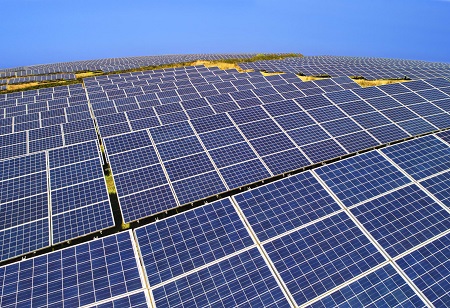
Korea's solar industry faces obstacles as Chinese rivals sell at cheaper prices

 Due to severe pricing rivalry from China, South Korean solar energy material firms are experiencing a decline in both employment and market size domestically.
Due to severe pricing rivalry from China, South Korean solar energy material firms are experiencing a decline in both employment and market size domestically.
Data released by the Korea Energy Agency on Sunday showed that the number of workers in the country's photovoltaic manufacturing sector decreased from 8,639 in 2015 to 6,654 in 2021. The size of the domestic PV manufacturing market decreased as well, from 2.29 trillion won to 2.17 trillion won ($1.66 billion).
The downturn was mainly due by the low-cost strategy pursued by Chinese enterprises. Due to an unfavourable cost structure, Korea's two top solar power businesses, Hanwha Solutions Corp. and OCI Co., stopped local manufacture of polysilicon, a crucial component of solar cells, in 2020. SKC Ltd. shut down its ethylene-vinyl acetate sheet business used in solar modules in April of the same year.
The sole Korean manufacturer of solar ingots and wafers, Woongjin Energy Co., was declared bankrupt in July of last year. In June, LG Electronics Inc. also shut down its solar module division. Chinese solar cells are gaining market share in the Korean market. 52 percent of the Korean market in 2017 and 59 percent in 2022 were made up of Chinese solar cells.
China's occupancy climbed from 27 to 32 percent in terms of modules. However, because Chinese solar cells are considered domestic if they are used to make solar modules in Korea, the true percentage of Chinese items in the domestic market is significantly higher.
“Even if we want to build a mother factory with cutting-edge facilities in Korea and lead R&D activities, we are hesitant to invest because there are no subsidies unlike in the U.S,” said a Korean PV industry official.
“To restore the domestic solar industry ecosystem, it is necessary to consider subsidizing the establishment of solar manufacturing facilities in Korea,” said Jung Woo-sik, vice president of Korea Photovoltaic Industry Association.

